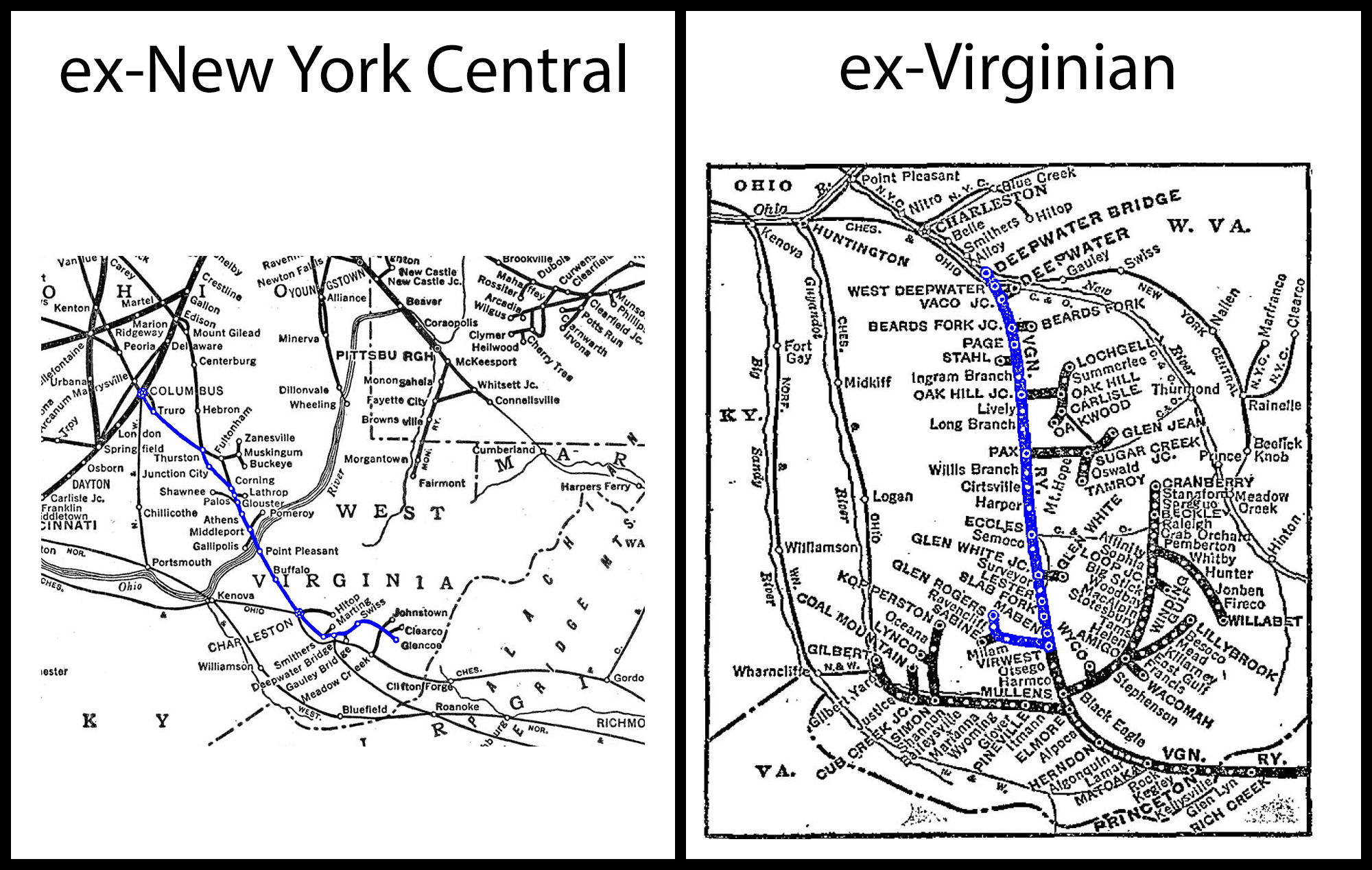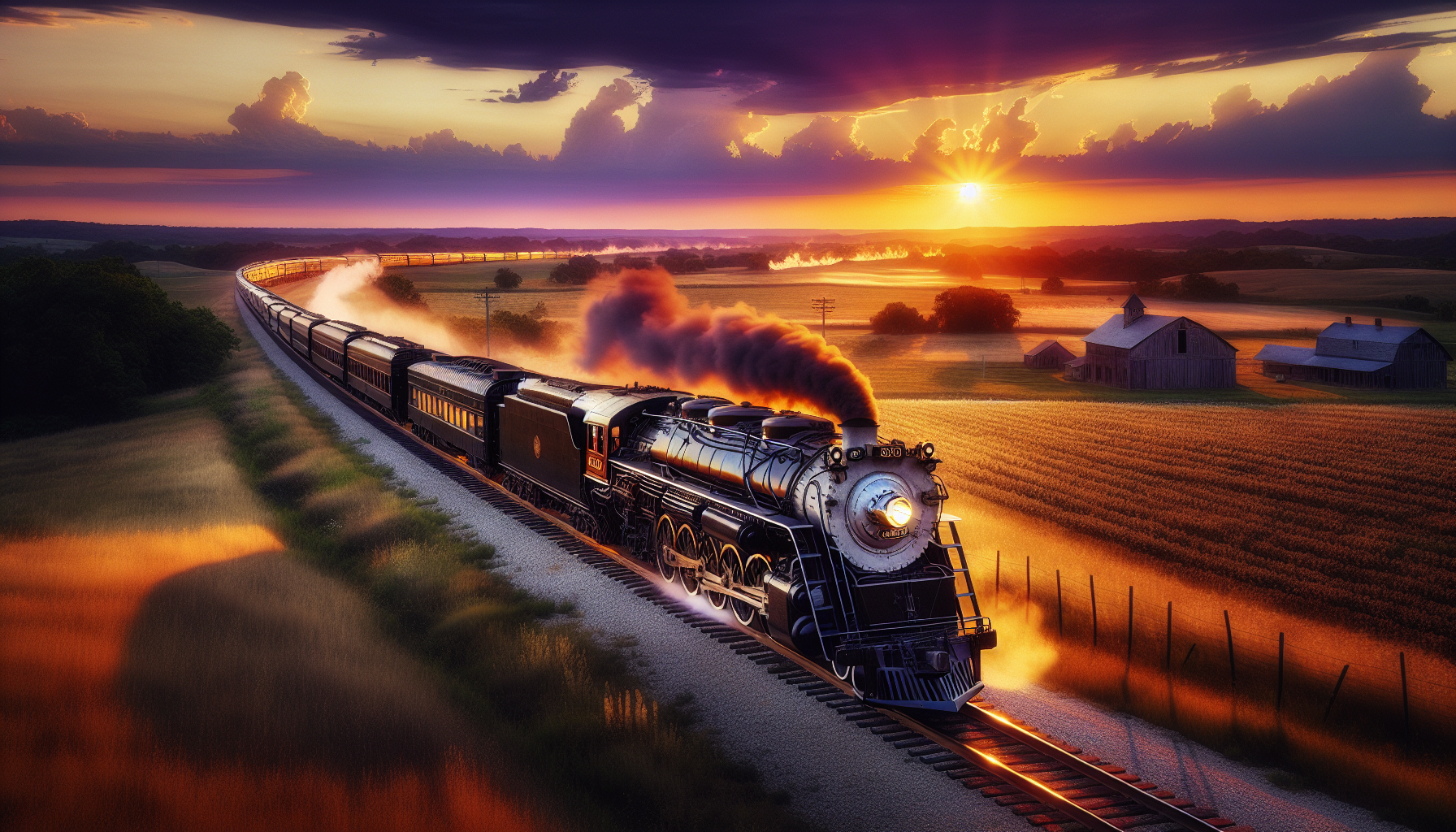Kanawha River Railroad: Map, History, Roster
Published: February 13, 2025
By: Adam Burns
The Kanawha River Railroad (KNWA) - a Watco Companies property - was formed in 2016 to lease and operate Norfolk Southern's West Virginia Seconedary. The system has greatly improved service over this former New York Central that had witnessed decreasing traffic under NS.
The Secondary is a corridor extending approximately 250 miles, connecting Columbus, Ohio, to Charleston, West Virginia, and further into the Gauley River valley, terminating at Enon, West Virginia. This route traverses the Ohio River at the Point Pleasant Bridge.
Constructed in segments during the late 19th century, the line owes its origins to several rail companies, notably the Toledo & Ohio Central Railway and the Kanawha & Michigan Railroad; both future New York Central subsidaries.
Following NYC's merger with the Pennsylvania Railroad to form Penn Central in 1968 the line came under Conrail's ownership in 1976. Following the 1999 Conrail split between NS/CSX, Norfolk Southern acquired the property.
Today, the Kanawha River Railroad operates 359.12 miles between Charleston and Columbus, and also maintains ex-Virginian trackage further south towards Elmore, West Virginia. Its traffic currently consists of coal, chemicals, cement, aggregates, and metals with interchange points at Columbus, Point Pleasant, and Elmore.
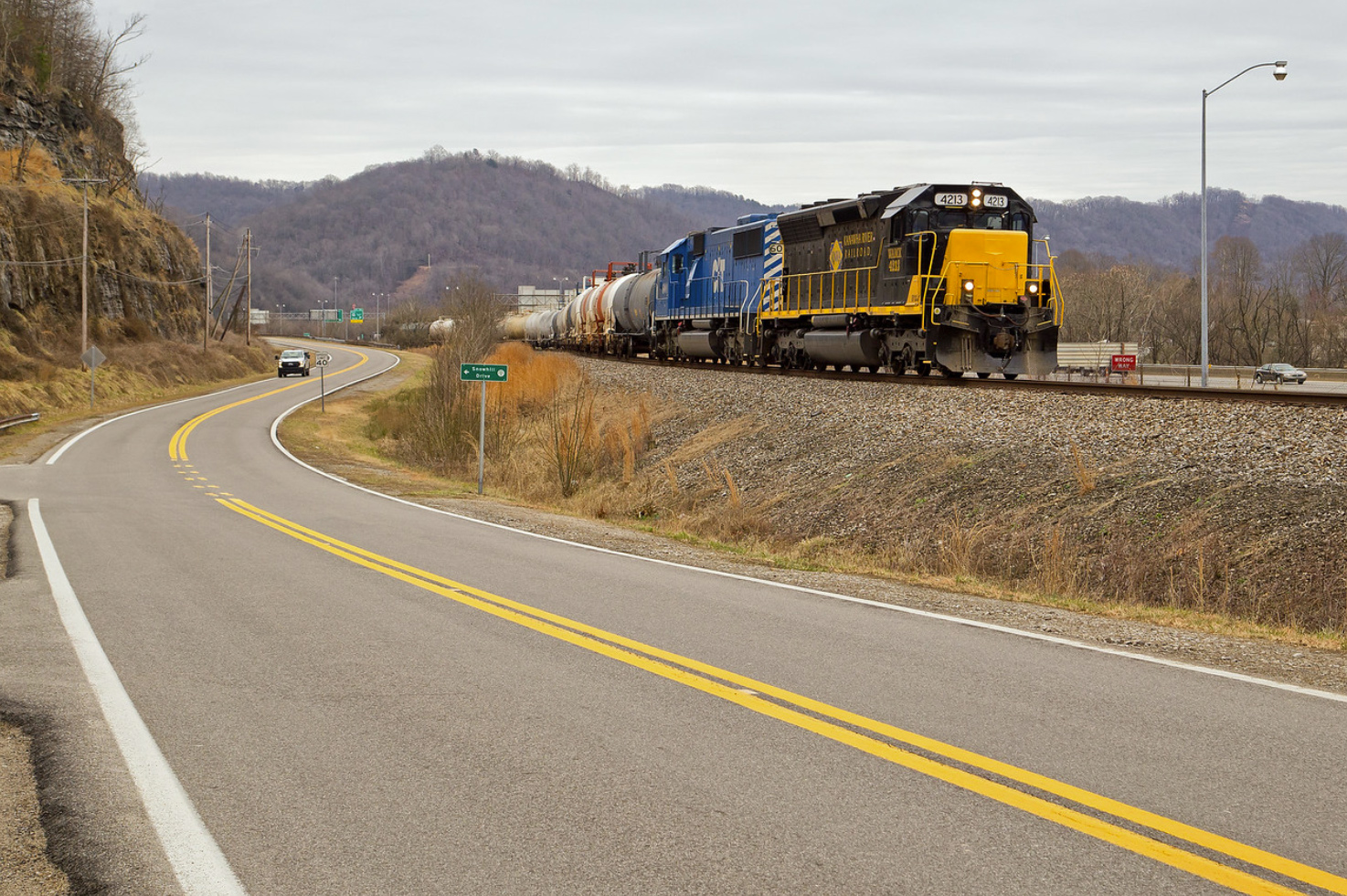 Kanawha River Railroad SD40M-2 #4213 leads a northbound freight near Charleston, West Virginia. Loyd Lowry photo.
Kanawha River Railroad SD40M-2 #4213 leads a northbound freight near Charleston, West Virginia. Loyd Lowry photo.Kanawha & Michigan
The Kanawha and Michigan Railroad (K&M) played an important role in the transportation infrastructure of the central United States in the late 19th and early 20th centuries.
Originally chartered on April 24, 1890 the K&M was the brainchild of business interests eager to exploit the abundant natural resources of coal and timber in the Kanawha Valley of West Virginia and extend northward to connect with the broader railway network.
Construction of the railroad began soon after its incorporation, driven by the demand for improved transportation routes from the mineral-rich regions of West Virginia to emerging industrial markets in the Midwest. The K&M linked the city of Charleston in West Virginia with the Ohio River, eventually extending its reach to Columbus and Toledo in conjunction with the Toledo & Ohio Central Railway.
The line played a crucial economic role, facilitating the movement of coal and timber, thus contributing significantly to the rapid industrialization of West Virginia and Ohio. As an enterprise, it bolstered local economies by providing jobs and drastically improving the movement of goods and passengers alike.
Throughout its operational tenure, the Kanawha and Michigan Railroad saw various transformations. In the early 1900s, it was leased to and later absorbed into the T&OC which itself was leased by the New York Central in 1922.
Kanawha River Railroad
The KNWA primarily operates along a significant corridor that extends over 300 miles, connecting regions of Ohio, West Virginia, and Virginia. This corridor, laden with rich historical significance and economic potential, includes crucial trackage rights that extend through the heart of Appalachia.
Historically, the Kanawha region has been a bedrock of industrial activity, thanks largely to its abundant coal deposits and waterways, notably the Kanawha River after which the railroad is named. In addition, during the New York Central era the Kanawha Valley was a hotbed of chemical plants and general manufacturing.
Until the mid-2010s the line, despite essentially being a long branch, continued to generate sufficient traffic for Norfolk Southern, which led to the corridor being leased to Watco in 2016 that launched the Kanawha River Railroad.
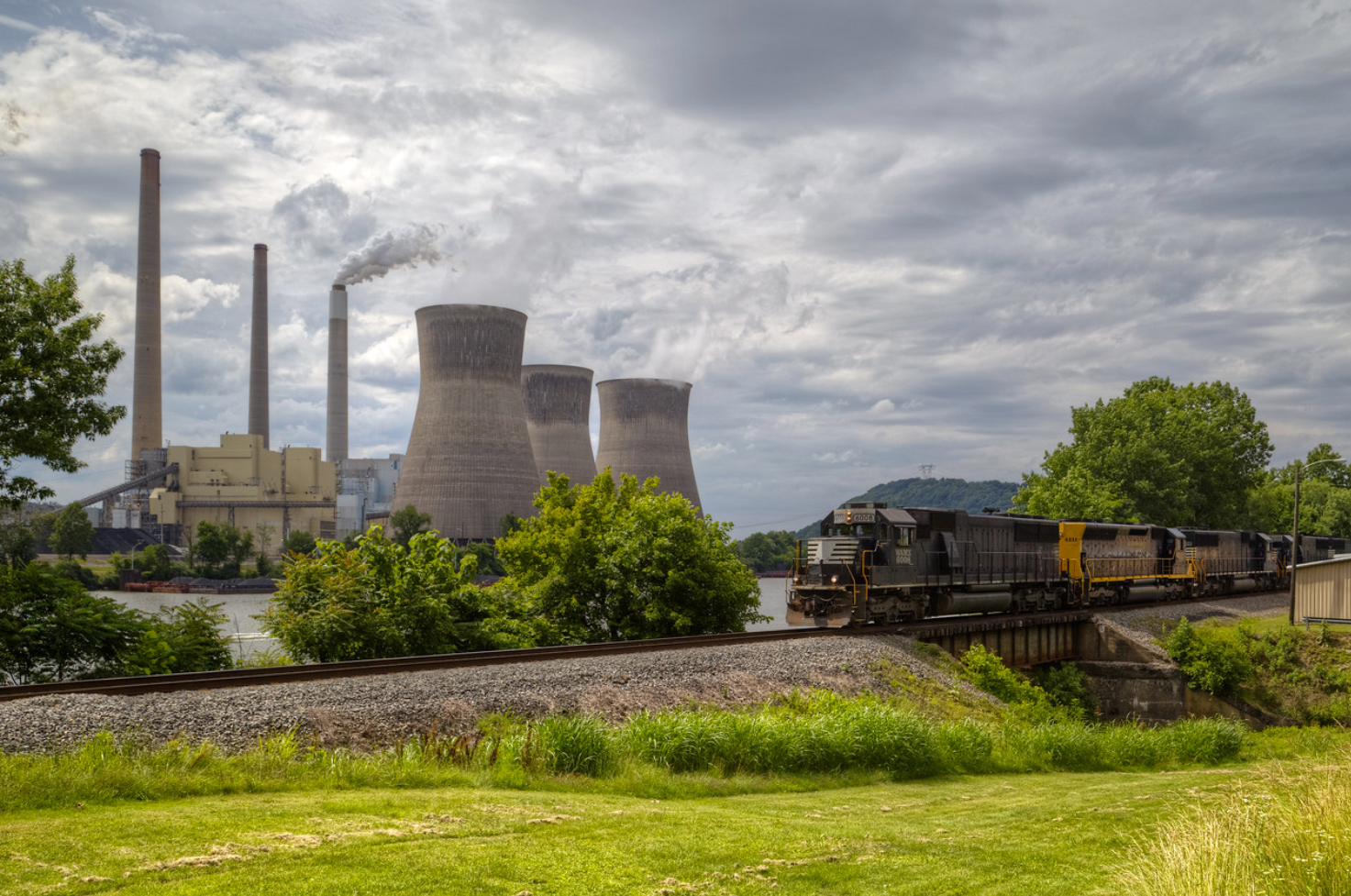 Kanawha River Railroad SD60 #6008, a former NS unit, leads a southbound manifest through Poca, West Virgina. Across the namesake river, the John Amos plant is the largest generation plant in the AEP system. Loyd Lowry photo.
Kanawha River Railroad SD60 #6008, a former NS unit, leads a southbound manifest through Poca, West Virgina. Across the namesake river, the John Amos plant is the largest generation plant in the AEP system. Loyd Lowry photo.Railroads like the KNWA are indispensable for supporting the industries that have historically relied on these Appalachian resources. The coal industry's fluctuation in demand poses both challenges and opportunities for short lines like KNWA, tasked with adapting to changing freight demands.
The company's business model prioritizes customer-centric solutions, whereby freight services are tailored to meet the specific logistical needs of their clients. This model not only ensures economic viability but also promotes growth opportunities for local businesses by optimizing supply chain efficiencies.
System Map
Roster
| Number | Model Type | Completion Date | Serial Number | History |
|---|---|---|---|---|
| 3901 | GP39V | 5/1965 | 30153 | ex-BNSF 2970; ex-BN 2970; ex-SP GP35 6643; built as SP GP35 7746 |
| 3902 | GP39V | 3/1965 | 29757 | ex-BNSF 2971; ex-BN GP39V 2971; ex-Paducah & Louisville GP35 2534; ex-ICG 2534; built as GM&O GP35 636 |
| 3921 | GP39V | 11/1963 | 28850 | ex-BNSF 2960l; ex-BN GP39V 2960; ex-CSXT GP35 4417; ex-WM 3577; built as WM GP35 502 |
| 4211 | SD40M-2 | 3/1967 | 32798 | ex-CEFX 3116; ex-SP SD45R 7447; built as SP SD45 8884 |
| 4213 | SD40M-2 | 4/1967 | 32815 | ex-CEFX 3122; ex-SP SD45R 7511; built as SP SD45 8901 |
| 4221 | SD40M-2 | 6/1967 | 32846 | Formerly numbered WAMX 4212. ex-CEFX 3118; SP SD45 7471; built as SP SD45 8932 |
| 6000 | SD60 | 10/1985 | 847023-39 | ex-NS 6602 |
| 6001 | SD60 | 2/1986 | 857107-14 | ex-NS 6617 |
| 6002 | SD60 | 2/1986 | 857107-20 | ex-NS 6623 |
| 6003 | SD60 | 2/1986 | 857107-24 | ex-NS 6627 |
| 6004 | SD60 | 6/1986 | 857124-4 | ex-NS 6632 |
| 6005 | SD60 | 8/1986 | 857125-5 | ex-NS 6645 |
| 6006 | SD60 | 11/1988 | 877025-6 | ex-NS 6656 |
| 6008 | SD60 | 12/1988 | 877026-2 | ex-NS 6667 |
| 6009 | SD60 | 12/1988 | 877026-3 | ex-NS 6668 |
| 6010 | SD60 | 12/1990 | 897056-15 | ex-NS 6690 |
| 6011 | SD60 | 12/1990 | 897056-20 | ex-NS 6695 |
| 6012 | SD60 | 5/1991 | 907147-3 | ex-NS 6699 |
| 6047 | SD60M | 1/1989 | 886010-16 | ex-UP 2255; built as UP 6100 |
| 6050 | SD60M | 9/1992 | 926302-16 | ex-UP 2486; built as UP 6331 |
| 6051 | SD60M | 1/1989 | 886010-20 | ex-UP 2259; built as UP 6104 |
| 6052 | SD60M | 2/1992 | 906100-35 | ex-UP 2458; built as UP 6303 |
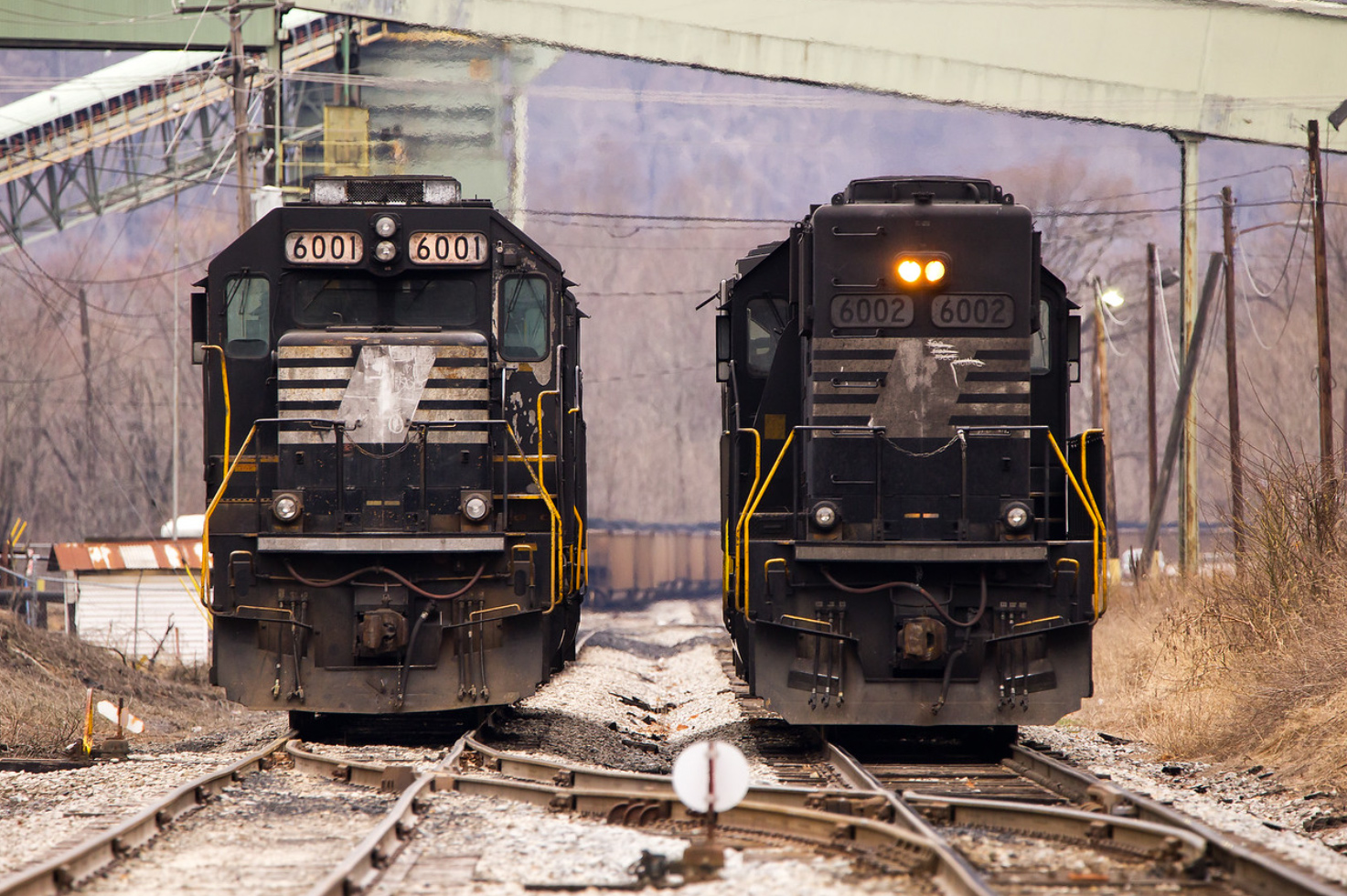 Kanawha River Railroad SD60s #6001 and #6002, and two other SD60s, are ready to assemble a coal train at the Mammoth Mine near London, West Virginia. Loyd Lowry photo.
Kanawha River Railroad SD60s #6001 and #6002, and two other SD60s, are ready to assemble a coal train at the Mammoth Mine near London, West Virginia. Loyd Lowry photo.The Kanawha River Railroad may operate away from the limelight of the larger railroads, but its contribution to the American freight landscape is undeniable.
As a vital artery traversing the economically significant and historically rich Appalachian region, it exemplifies the crucial role of short line railroads in sustaining regional economies and advancing national transportation infrastructure.
Recent Articles
-
Pennsylvania Father's Day Train Rides: A Complete Guide
May 11, 25 11:14 PM
This state offers a unique way to celebrate Father's Day with unforgettable train rides that combine history, stunning landscapes, and a dash of nostalgia. -
New York Father's Day Train Rides: A Complete Guide
May 11, 25 03:57 PM
If you’re looking to make this day memorable, consider taking a scenic train ride with your dad through the beautiful landscapes of New York State. -
Missouri Father's Day Train Rides: A Complete Guide
May 11, 25 02:57 PM
If you're looking for a unique way to honor your dad this year, why not consider a scenic and historical train ride?
